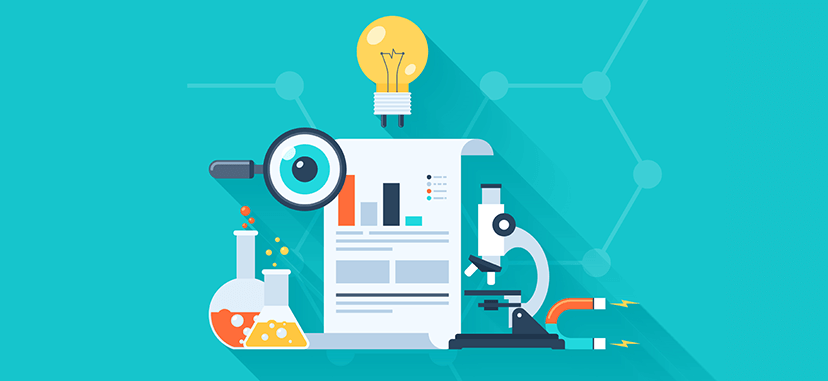
Click the button to start reading
From Hypothesis to Results: Mastering the Art of Marketing Experiments
Suppose you’re trying to convince your friend to watch your favorite movie. You could either tell them about the intriguing plot or show them the exciting trailer.
To find out which approach works best, you try both methods with different friends and see which one gets more people to watch the movie.
Marketing experiments work in much the same way, allowing businesses to test different marketing strategies, gather feedback from their target audience, and make data-driven decisions that lead to improved outcomes and growth.
By testing different approaches and measuring their outcomes, companies can identify what works best for their unique target audience and adapt their marketing strategies accordingly. This leads to more efficient use of marketing resources and results in higher conversion rates, increased customer satisfaction, and, ultimately, business growth.
Marketing experiments are the backbone of building an organization’s culture of learning and curiosity, encouraging employees to think outside the box and challenge the status quo.
In this article, we will delve into the fundamentals of marketing experiments, discussing their key elements and various types. By the end, you’ll be in a position to start running these tests and securing better marketing campaigns with explosive results.

Why Digital Marketing Experiments Matter
One of the most effective ways to drive growth and optimize marketing strategies is through digital marketing experiments. These experiments provide invaluable insights into customer preferences, behaviors, and the overall effectiveness of marketing efforts, making them an essential component of any digital marketing strategy.
Digital marketing experiments matter for several reasons:
- Customer-centric approach: By conducting experiments, businesses can gain a deeper understanding of their target audience’s preferences and behaviors. This enables them to tailor their marketing efforts to better align with customer needs, resulting in more effective and engaging campaigns.
- Data-driven decision-making: Marketing experiments provide quantitative data on the performance of different marketing strategies and tactics. This empowers businesses to make informed decisions based on actual results rather than relying on intuition or guesswork. Ultimately, this data-driven approach leads to more efficient allocation of resources and improved marketing outcomes.
- Agility and adaptability: Businesses must be agile and adaptable to keep up with emerging trends and technologies. Digital marketing experiments allow businesses to test new ideas, platforms, and strategies in a controlled environment, helping them stay ahead of the curve and quickly respond to changing market conditions.
- Continuous improvement: Digital marketing experiments facilitate an iterative process of testing, learning, and refining marketing strategies. This ongoing cycle of improvement enables businesses to optimize their marketing efforts, drive better results, and maintain a competitive edge in the digital marketplace.
- ROI and profitability: By identifying which marketing tactics are most effective, businesses can allocate their marketing budget more efficiently and maximize their return on investment. This increased profitability can be reinvested into the business, fueling further growth and success.
Developing a culture of experimentation allows businesses to continuously improve their marketing strategies, maximize their ROI, and avoid being left behind by the competition.

The Fundamentals of Digital Marketing Experiments
Marketing experiments are structured tests that compare different marketing strategies, tactics, or assets to determine which one performs better in achieving specific objectives.
These experiments use a scientific approach, which involves formulating hypotheses, controlling variables, gathering data, and analyzing the results to make informed decisions.
Marketing experiments provide valuable insights into customer preferences and behaviors, enabling businesses to optimize their marketing efforts and maximize returns on investment (ROI).
There are several types of marketing experiments that businesses can use, depending on their objectives and available resources.
The most common types include:
A/B testing
A/B testing, also known as split testing, is a simple yet powerful technique that compares two variations of a single variable to determine which one performs better.
In an A/B test, the target audience is randomly divided into two groups: one group is exposed to version A (the control). In contrast, the other group is exposed to version B (the treatment). The performance of both versions is then measured and compared to identify the one that yields better results.
A/B testing can be applied to various marketing elements, such as headlines, calls-to-action, email subject lines, landing page designs, and ad copy. The primary advantage of A/B testing is its simplicity, making it easy for businesses to implement and analyze.
Multivariate testing
Multivariate testing is a more advanced technique that allows businesses to test multiple variables simultaneously.
In a multivariate test, several elements of a marketing asset are modified and combined to create different versions. These versions are then shown to different segments of the target audience, and their performance is measured and compared to determine the most effective combination of variables.
Multivariate testing is beneficial when optimizing complex marketing assets, such as websites or email templates, with multiple elements that may interact with one another. However, this method requires a larger sample size and more advanced analytical tools compared to A/B testing.
Pre-post analysis
Pre-post analysis involves comparing the performance of a marketing strategy before and after implementing a change.
This type of experiment is often used when it is not feasible to conduct an A/B or multivariate test, such as when the change affects the entire customer base or when there are external factors that cannot be controlled.
While pre-post analysis can provide useful insights, it is less reliable than A/B or multivariate testing because it does not account for potential confounding factors. To obtain accurate results from a pre-post analysis, businesses must carefully control for external influences and ensure that the observed changes are indeed due to the implemented modifications.

How To Start Growth Marketing Experiments
To conduct effective marketing experiments, businesses must pay attention to the following key elements:
Clear objectives
Having clear objectives is crucial for a successful marketing experiment. Before starting an experiment, businesses must identify the specific goals they want to achieve, such as increasing conversions, boosting engagement, or improving click-through rates. Clear objectives help guide the experimental design and ensure the results are relevant and actionable.
Hypothesis-driven approach
A marketing experiment should be based on a well-formulated hypothesis that predicts the expected outcome. A reasonable hypothesis is specific, testable, and grounded in existing knowledge or data. It serves as the foundation for experimental design and helps businesses focus on the most relevant variables and outcomes.
Proper experimental design
A marketing experiment requires a well-designed test that controls for potential confounding factors and ensures the reliability and validity of the results. This includes the random assignment of participants, controlling for external influences, and selecting appropriate variables to test. Proper experimental design increases the likelihood that observed differences are due to the tested variables and not other factors.
Adequate sample size
A successful marketing experiment requires an adequate sample size to ensure the results are statistically significant and generalizable to the broader target audience. The required sample size depends on the type of experiment, the expected effect size, and the desired level of confidence. In general, larger sample sizes provide more reliable and accurate results but may also require more resources to conduct the experiment.
Data-driven analysis
Marketing experiments rely on a data-driven analysis of the results. This involves using statistical techniques to determine whether the observed differences between the tested variations are significant and meaningful. Data-driven analysis helps businesses make informed decisions based on empirical evidence rather than intuition or gut feelings.
By understanding the fundamentals of marketing experiments and following best practices, businesses can gain valuable insights into customer preferences and behaviors, ultimately leading to improved outcomes and growth.

Setting up Your First Marketing Experiment
Embarking on your first marketing experiment can be both exciting and challenging. Following a systematic approach, you can set yourself up for success and gain valuable insights to improve your marketing efforts.
Here’s a step-by-step guide to help you set up your first marketing experiment.
Identifying your marketing objectives
Before diving into your experiment, it’s essential to establish clear marketing objectives. These objectives will guide your entire experiment, from hypothesis formulation to data analysis.
Consider what you want to achieve with your marketing efforts, such as increasing website conversions, improving open email rates, or boosting social media engagement.
Make sure your objectives are specific, measurable, achievable, relevant, and time-bound (SMART) to ensure that they are actionable and provide meaningful insights.
Formulating a hypothesis
With your marketing objectives in mind, the next step is formulating a hypothesis for your experiment. A hypothesis is a testable prediction that outlines the expected outcome of your experiment. It should be based on existing knowledge, data, or observations and provide a clear direction for your experimental design.
For example, suppose your objective is to increase email open rates. In that case, your hypothesis might be, “Adding the recipient’s first name to the email subject line will increase the open rate by 10%.” This hypothesis is specific, testable, and clearly linked to your marketing objective.
Designing the experiment
Once you have a hypothesis in place, you can move on to designing your experiment. This involves several key decisions:
Choosing the right testing method:
Select the most appropriate testing method for your experiment based on your objectives, hypothesis, and available resources.
As discussed earlier, common testing methods include A/B, multivariate, and pre-post analyses. Choose the method that best aligns with your goals and allows you to effectively test your hypothesis.
Selecting the variables to test:
Identify the specific variables you will test in your experiment. These should be directly related to your hypothesis and marketing objectives. In the email open rate example, the variable to test would be the subject line, specifically the presence or absence of the recipient’s first name.
When selecting variables, consider their potential impact on your marketing objectives and prioritize those with the greatest potential for improvement. Also, ensure that the variables are easily measurable and can be manipulated in your experiment.
Identifying the target audience:
Determine the target audience for your experiment, considering factors such as demographics, interests, and behaviors. Your target audience should be representative of the larger population you aim to reach with your marketing efforts.
When segmenting your audience for the experiment, ensure that the groups are as similar as possible to minimize potential confounding factors.
In A/B or multivariate testing, this can be achieved through random assignment, which helps control for external influences and ensures a fair comparison between the tested variations.
Executing the experiment
With your experiment designed, it’s time to put it into action.
This involves several key considerations:
Timing and duration:
Choose the right timing and duration for your experiment based on factors such as the marketing channel, target audience, and the nature of the tested variables.
The duration of the experiment should be long enough to gather a sufficient amount of data for meaningful analysis but not so long that it negatively affects your marketing efforts or causes fatigue among your target audience.
In general, aim for a duration that allows you to reach a predetermined sample size or achieve statistical significance. This may vary depending on the specific experiment and the desired level of confidence.
Monitoring the experiment:
During the experiment, monitor its progress and performance regularly to ensure that everything is running smoothly and according to plan. This includes checking for technical issues, tracking key metrics, and watching for any unexpected patterns or trends.
If any issues arise during the experiment, address them promptly to prevent potential biases or inaccuracies in the results. Additionally, avoid making changes to the experimental design or variables during the experiment, as this can compromise the integrity of the results.
Analyzing the results
Once your experiment has concluded, it’s time to analyze the data and draw conclusions.
This involves two key aspects:
Statistical significance:
Statistical significance is a measure of the likelihood that the observed differences between the tested variations are due to the variables being tested rather than random chance. To determine statistical significance, you will need to perform a statistical test, such as a t-test or chi-squared test, depending on the nature of your data.
Generally, a result is considered statistically significant if the probability of the observed difference occurring by chance (the p-value) is less than a predetermined threshold, often set at 0.05 or 5%. This means there is a 95% confidence level that the observed difference is due to the tested variables and not random chance.
Practical significance:
While statistical significance is crucial, it’s also essential to consider the practical significance of your results. This refers to the real-world impact of the observed differences on your marketing objectives and business goals.
To assess practical significance, consider the effect size of the observed difference (e.g., the percentage increase in email open rates) and the potential return on investment (ROI) of implementing the winning variation. This will help you determine whether the experiment results are worth acting upon and inform your marketing decisions moving forward.
A systematic approach to designing growth marketing experiments helps you to design, execute, and analyze your experiment effectively, ultimately leading to better marketing outcomes and business growth.

Examples of Successful Marketing Experiments
In this section, we will explore three fictional case studies of successful marketing experiments that led to improved marketing outcomes. These examples will demonstrate the practical application of marketing experiments across different channels and provide valuable lessons that can be applied to your own marketing efforts.
Example 1: Redesigning a website for increased conversions
AcmeWidgets, an online store selling innovative widgets, noticed that its website conversion rate had plateaued.
They conducted a marketing experiment to test whether a redesigned landing page could improve conversions. They hypothesized that a more visually appealing and user-friendly design would increase conversion rates by 15%.
AcmeWidgets used A/B testing to compare their existing landing page (the control) with a new, redesigned version (the treatment). They randomly assigned website visitors to one of the two landing pages. They tracked conversions over a period of four weeks.
At the end of the experiment, AcmeWidgets found that the redesigned landing page had a conversion rate 18% higher than the control. The results were statistically significant, and the company decided to implement the new design across its entire website.
As a result, AcmeWidgets experienced a substantial increase in sales and revenue.
Example 2: Optimizing email marketing campaigns
EcoTravel, a sustainable travel agency, wanted to improve the open rates of their monthly newsletter. They hypothesized that adding a sense of urgency to the subject line would increase open rates by 10%.
To test this hypothesis, EcoTravel used A/B testing to compare two different subject lines for their newsletter:
- “Discover the world’s most beautiful eco-friendly destinations” (control)
- “Last chance to book: Explore the world’s most beautiful eco-friendly destinations” (treatment)
EcoTravel sent the newsletter to a random sample of their subscribers. Half received the control subject line, and the other half received the treatment. They then tracked the open rates for both groups over one week.
The results of the experiment showed that the treatment subject line, which included a sense of urgency, led to a 12% increase in open rates compared to the control.
Based on these findings, EcoTravel incorporated a sense of urgency in their future email subject lines to boost newsletter engagement.
Example 3: Improving social media ad performance
FitFuel, a meal delivery service for fitness enthusiasts, was looking to improve its Facebook ad campaign’s click-through rate (CTR). They hypothesized that using an image of a satisfied customer enjoying a FitFuel meal would increase CTR by 8% compared to their current ad featuring a meal image alone.
FitFuel conducted an A/B test on their Facebook ad campaign, comparing the performance of the control ad (meal image only) with the treatment ad (customer enjoying a meal). They targeted a similar audience with both ad variations and measured the CTR over two weeks.
The experiment revealed that the treatment ad, featuring the customer enjoying a meal, led to a 10% increase in CTR compared to the control ad. FitFuel decided to update its
Facebook ad campaign with the new image, resulting in a more cost-effective campaign and higher return on investment.
Lessons learned from these examples
These fictional examples of successful marketing experiments highlight several key takeaways:
- Clearly defined objectives and hypotheses: In each example, the companies had specific marketing objectives and well-formulated hypotheses, which helped guide their experiments and ensure relevant and actionable results.
- Proper experimental design: Each company used the appropriate testing method for their experiment and carefully controlled variables, ensuring accurate and reliable results.
- Data-driven decision-making: The companies analyzed the data from their experiments to make informed decisions about implementing changes to their marketing strategies, ultimately leading to improved outcomes.
- Continuous improvement: These examples demonstrate that marketing experiments can improve marketing efforts continuously. By regularly conducting experiments and applying the lessons learned, businesses can optimize their marketing strategies and stay ahead of the competition.
- Relevance across channels: Marketing experiments can be applied across various marketing channels, such as website design, email campaigns, and social media advertising. Regardless of the channel, the principles of marketing experimentation remain the same, making them a valuable tool for marketers in diverse industries.
By learning from these fictional examples and applying the principles of marketing experimentation to your own marketing efforts, you can unlock valuable insights, optimize your marketing strategies, and achieve better results for your business.

Common Pitfalls of Marketing Experiments and How to Avoid Them
Conducting marketing experiments can be a powerful way to optimize your marketing strategies and drive better results.
However, it’s important to be aware of common pitfalls that can undermine the effectiveness of your experiments. In this section, we will discuss some of these pitfalls and provide tips on how to avoid them.
Insufficient sample size
An insufficient sample size can lead to unreliable results and limit the generalizability of your findings. When your sample size is too small, you run the risk of not detecting meaningful differences between the tested variations or incorrectly attributing the observed differences to random chance.
To avoid this pitfall, calculate the required sample size for your experiment based on factors such as the expected effect size, the desired level of confidence, and the type of statistical test you will use.
In general, larger sample sizes provide more reliable and accurate results but may require more resources to conduct the experiment. Consider adjusting your experimental design or testing methods to accommodate a larger sample size if necessary.
Lack of clear objectives
Your marketing experiment may not provide meaningful or actionable insights without clear objectives. Unclear objectives can lead to poorly designed experiments, irrelevant variables, or difficulty interpreting the results.
To prevent this issue, establish specific, measurable, achievable, relevant, and time-bound (SMART) objectives before starting your experiment. These objectives should guide your entire experiment, from hypothesis formulation to data analysis, and ensure that your findings are relevant and useful for your marketing efforts.
Confirmation bias
Confirmation bias occurs when you interpret the results of your experiment in a way that supports your pre-existing beliefs or expectations. This can lead to inaccurate conclusions and suboptimal marketing decisions.
To minimize confirmation bias, approach your experiments with an open mind and be willing to accept results that challenge your assumptions.
Additionally, involve multiple team members in the data analysis process to ensure diverse perspectives and reduce the risk of individual biases influencing the interpretation of the results.
Overlooking external factors
External factors, such as changes in market conditions, seasonal fluctuations, or competitor actions, can influence the results of your marketing experiment and potentially confound your findings. Ignoring these factors may lead to inaccurate conclusions about the effectiveness of your marketing strategies.
To account for external factors, carefully control for potential confounding variables during the experimental design process. This might involve using random assignment, testing during stable periods, or controlling for known external influences.
Consider running follow-up experiments or analyzing historical data to confirm your findings and rule out the impact of external factors.
Tips for avoiding these pitfalls
By being aware of these common pitfalls and following best practices, you can ensure the success of your marketing experiments and obtain valuable insights for your marketing efforts. Here are some tips to help you avoid these pitfalls:
- Plan your experiment carefully: Invest time in the planning stage to establish clear objectives, calculate an adequate sample size, and design a robust experiment that controls for potential confounding factors.
- Use a hypothesis-driven approach: Formulate a specific, testable hypothesis based on existing knowledge or data to guide your experiment and focus on the most relevant variables and outcomes.
- Monitor your experiment closely: Regularly check the progress of your experiment, address any issues that arise, and ensure that your experiment is running smoothly and according to plan.
- Analyze your data objectively: Use statistical techniques to determine the significance of your results and consider the practical implications of your findings before making marketing decisions.
- Learn from your experiments: Apply the lessons learned from your experiments to continuously improve your marketing strategies and stay ahead of the competition.
By avoiding these common pitfalls and following best practices, you can increase the effectiveness of your marketing experiments, gain valuable insights into customer preferences and behaviors, and ultimately drive better results for your business.

Building a Culture of Experimentation
To truly reap the benefits of marketing experiments, it’s essential to build a culture of experimentation within your organization. This means fostering an environment where curiosity, learning, data-driven decision-making, and collaboration are valued and encouraged.
Encouraging curiosity and learning within your organization
Cultivating curiosity and learning starts with leadership. Encourage your team to ask questions, explore new ideas, and embrace a growth mindset.
Promote ongoing learning by providing resources, such as training programs, workshops, or access to industry events, that help your team stay up-to-date with the latest marketing trends and techniques.
Create a safe environment where employees feel comfortable sharing their ideas and taking calculated risks. Emphasize the importance of learning from both successes and failures and treat every experiment as an opportunity to grow and improve.
Adopting a data-driven mindset
A data-driven mindset is crucial for successful marketing experimentation. Encourage your team to make decisions based on data rather than relying on intuition or guesswork. This means analyzing the results of your experiments objectively, using statistical techniques to determine the significance of your findings, and considering the practical implications of your results before making marketing decisions.
To foster a data-driven culture, invest in the necessary tools and technologies to collect, analyze, and visualize data effectively. Train your team on how to use these tools and interpret the data to make informed marketing decisions.
Regularly review your data-driven efforts and adjust your strategies as needed to continuously improve and optimize your marketing efforts.
Integrating experimentation into your marketing strategy
Establish a systematic approach to conducting marketing experiments to fully integrate experimentation into your marketing strategy. This might involve setting up a dedicated team or working group responsible for planning, executing, and analyzing experiments or incorporating experimentation as a standard part of your marketing processes.
Create a roadmap for your marketing experiments that outlines each project’s objectives, hypotheses, and experimental designs. Monitor the progress of your experiments and adjust your roadmap as needed based on the results and lessons learned.
Ensure that your marketing team has the necessary resources, such as time, budget, and tools, to conduct experiments effectively. Set clear expectations for the role of experimentation in your marketing efforts and emphasize its importance in driving better results and continuous improvement.
Collaborating across teams for a holistic approach
Marketing experiments often involve multiple teams within an organization, such as design, product, sales, and customer support. Encourage cross-functional collaboration to ensure a holistic approach to experimentation and leverage each team’s unique insights and expertise.
Establish clear communication channels and processes for sharing information and results from your experiments. This might involve regular meetings, shared documentation, or internal presentations to keep all stakeholders informed and engaged.
Collaboration also extends beyond your organization. Connect with other marketing professionals, industry experts, and thought leaders to learn from their experiences, share your own insights, and stay informed about the latest trends and best practices in marketing experimentation.
By building a culture of experimentation within your organization, you can unlock valuable insights, optimize your marketing strategies, and drive better results for your business.
Encourage curiosity and learning, adopt a data-driven mindset, integrate experimentation into your marketing strategy, and collaborate across teams to create a strong foundation for marketing success.
Conclusion
If you’re new to marketing experiments, don’t be intimidated—start small and gradually expand your efforts as your confidence grows. By embracing a curious and data-driven mindset, even small-scale experiments can lead to meaningful insights and improvements.
As you gain experience, you can tackle more complex experiments and further refine your marketing strategies.
Remember, continuous learning and improvement is the key to success in marketing experimentation. By regularly conducting experiments, analyzing the results, and applying the lessons learned, you can stay ahead of the competition and drive better results for your business.
So, take the plunge and start experimenting today—your marketing efforts will be all the better.
















